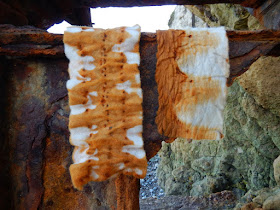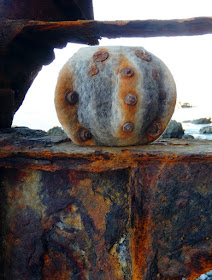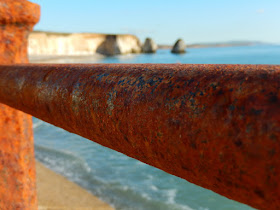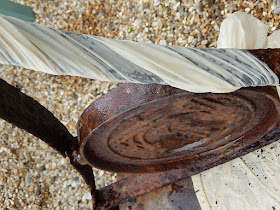With the end of November approaching fast it’s time to bring the rust dyeing
experiments to a conclusion. This final piece of work sums up the past
months of experimentation...
I would like to dedicate it to our very dear friend and neighbour
Eric Geddes,
who died last year on this day.
Eric was a sculptor and artist who for many decades,
made the beaches of West Wight his studio.
He worked with materials found on the shoreline,
constructing huge monumental structures from driftwood
and smaller forms
from clays, seaweed and stone.
constructing huge monumental structures from driftwood
and smaller forms
from clays, seaweed and stone.
 |
| COMPTON BAY : 1982 - 83 |
 |
| FORT VICTORIA : 1993 - 1998 |
 |
| ISHIGOROKO : mind of the stone Compton Bay 1993 |
Eric has been a great inspiration, especially over these past months, when I've
been following a new experimental path that finally led
been following a new experimental path that finally led
to me taking the feltwork and fabrics back to the beach to be photographed.
Hoping Eric would approve?
..
'ISHIGOROKO' was the inspiration behind my final piece.
Wrapping a stone with the rust-stained fabric,
dyed from contact with Eric's welded metal sculpture,
then placing it back in the sea at Freshwater Bay.Wrapping a stone with the rust-stained fabric,
dyed from contact with Eric's welded metal sculpture,
Hoping Eric would approve?
In memory of
ERIC GEDDES
1st November 1928 - 28th November 2016
All EG images reproduced with kind permission of June Geddes 2017


















































